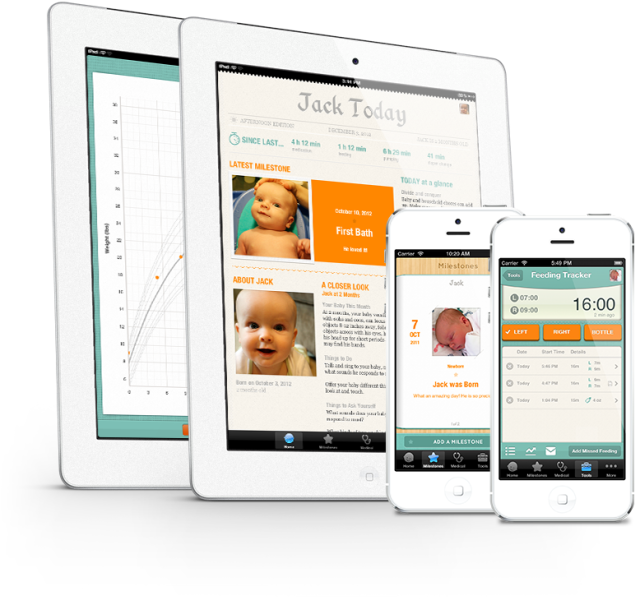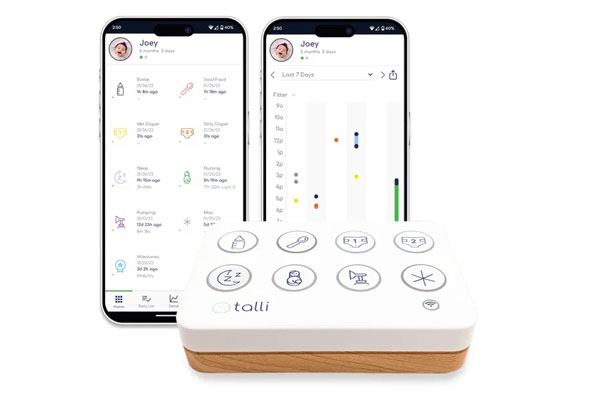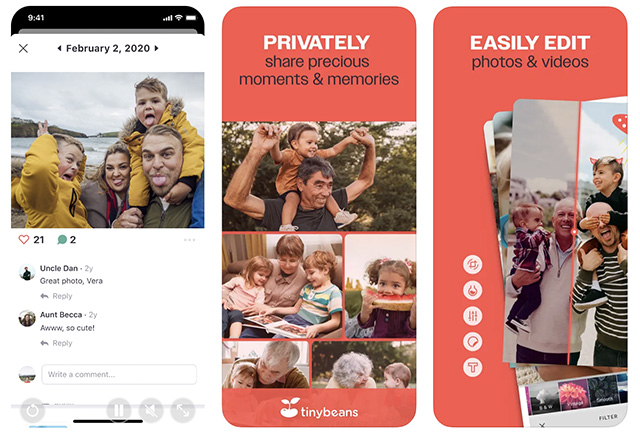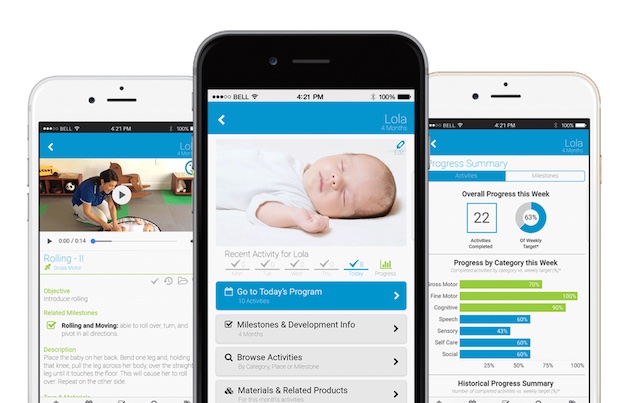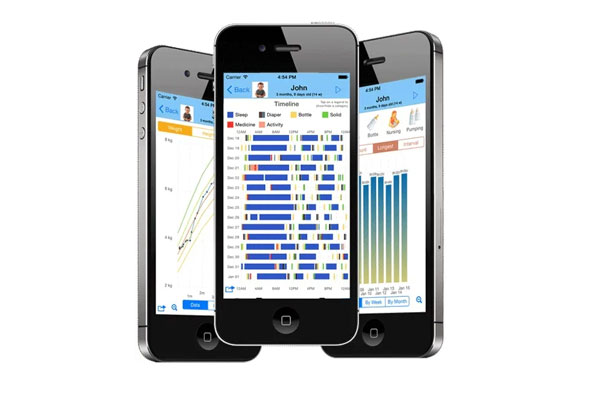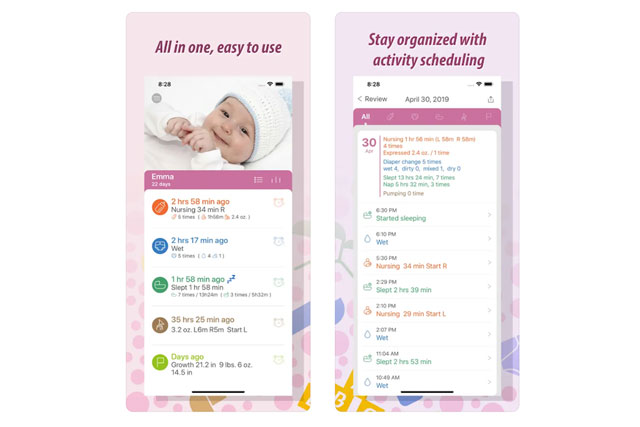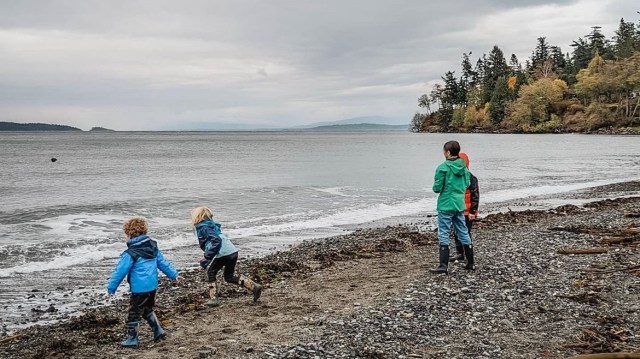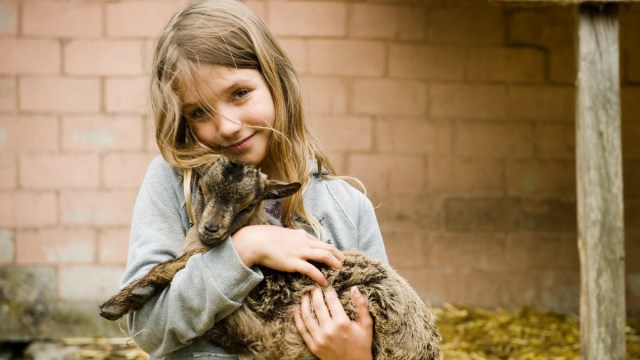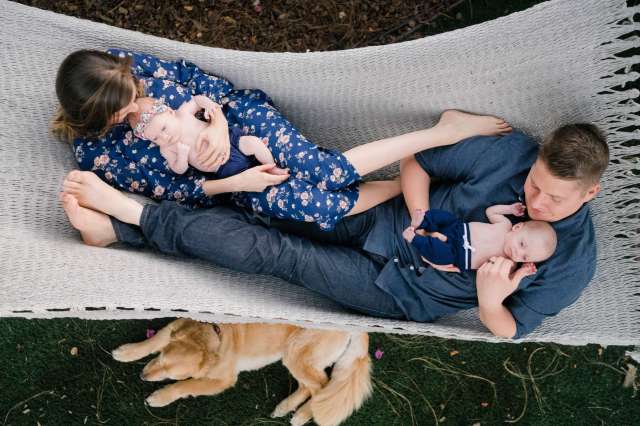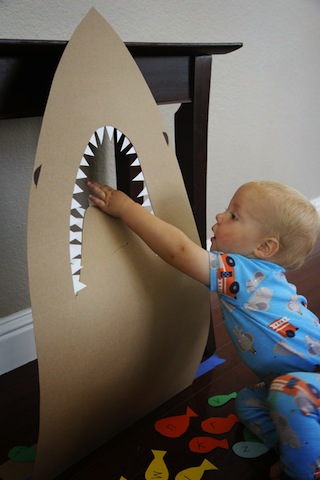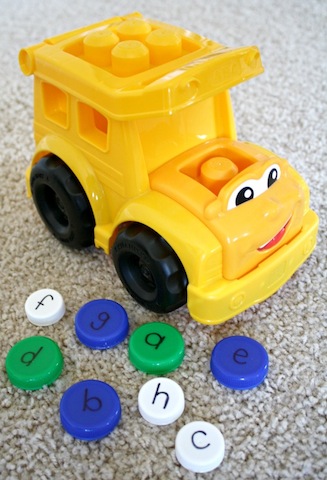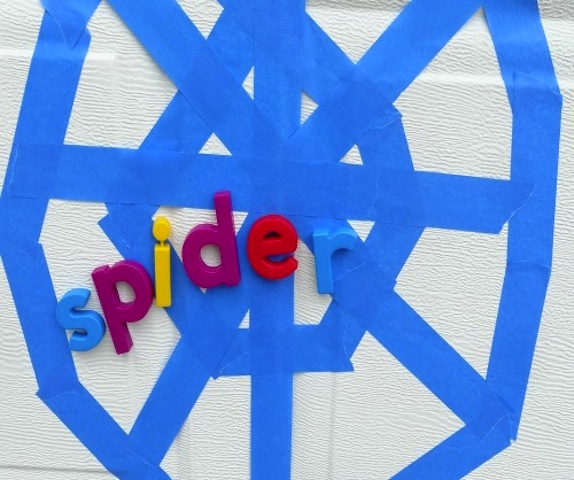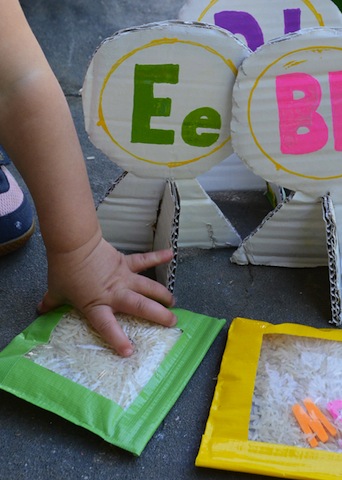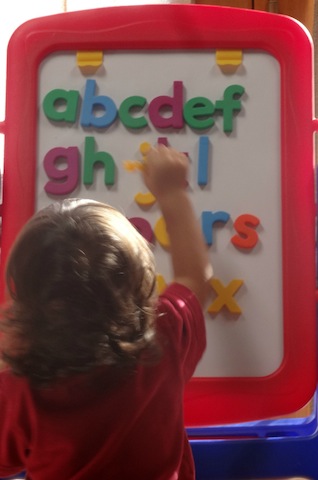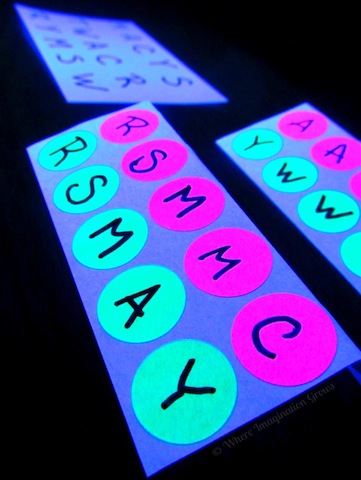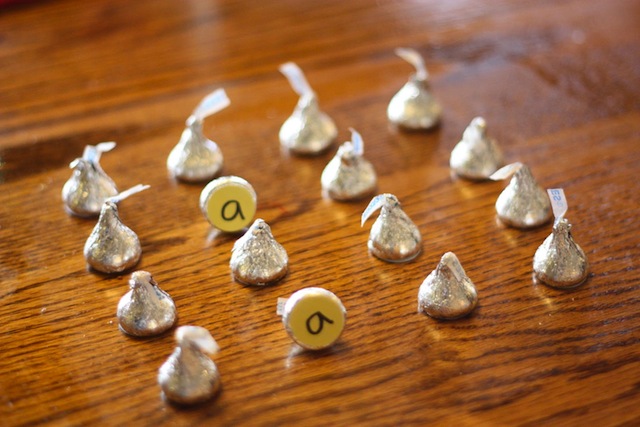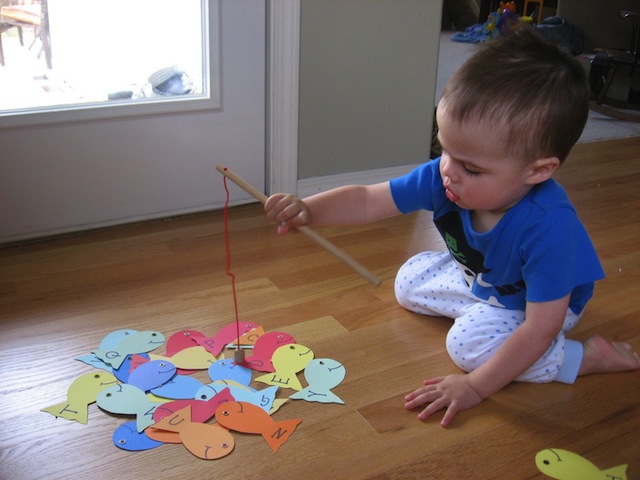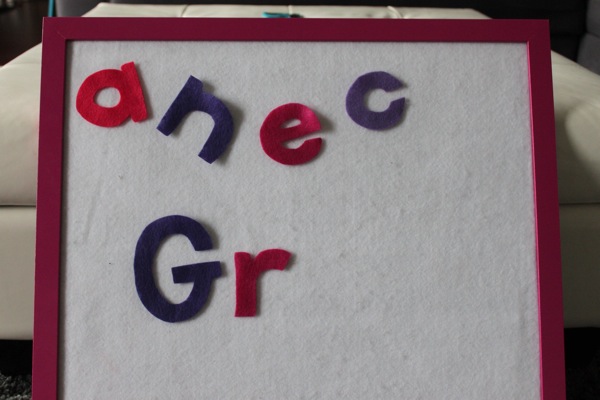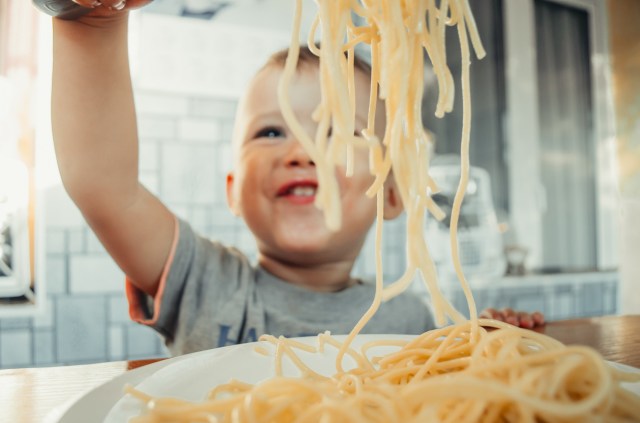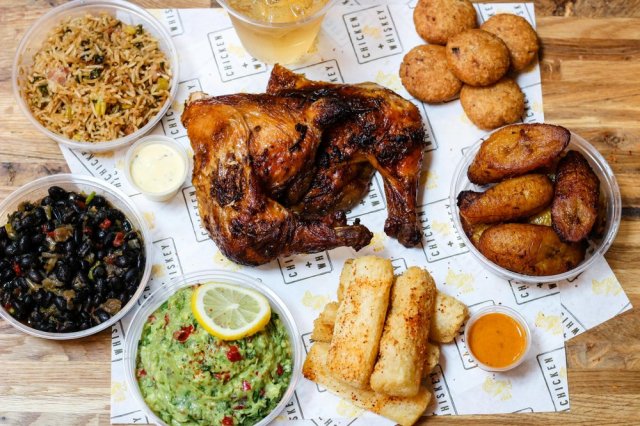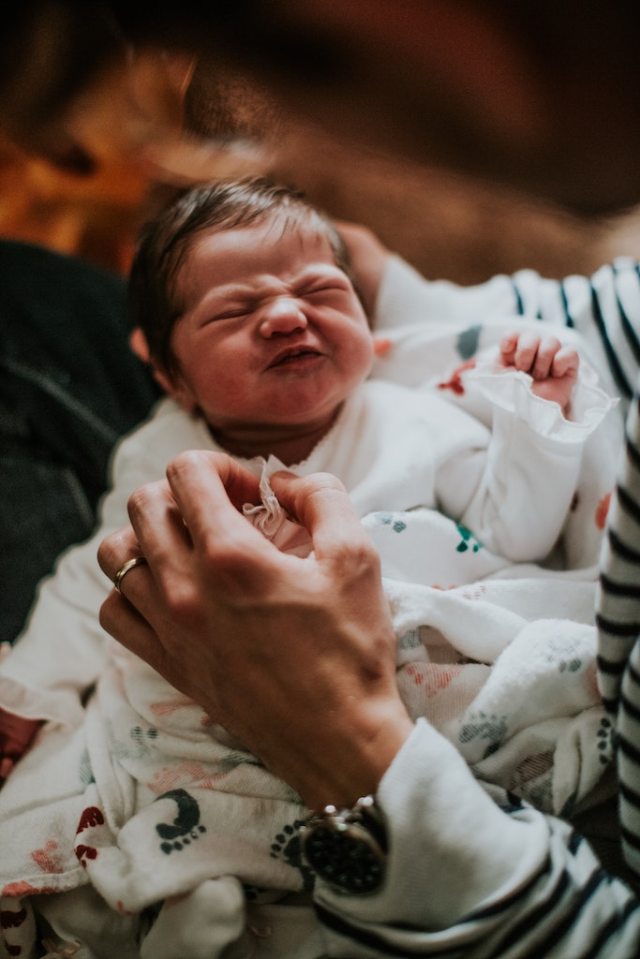Take the city at their pace, and discover some accessible parks and museums in NYC that’ll appeal to everyone from the littlest tykes to their aging grandparents
Are the grandparents coming to NYC for a visit? Better get your hug muscles ready! But after the warm welcomes have been doled out, you may want to hit the city streets for some family fun. But if Grandma has a bad back or Grandpa’s hearing isn’t what it used to be, and if the kids are very likely bouncing off the wall with excitement, a New York adventure might seem all but impossible. Is there anywhere in the city that can possible appeal to both your energetic children and aging parents?
Hey, you’re in NYC. There’s something for everyone here! Read on to see the best museums and parks to visit, as well as other tips and tricks for planning the ultimate urban trip with the grandparents.
Where to Stay with Grandparents in NYC
When choosing a hotel or AirBnB for your aging parents to stay, consider two key things: location and accessibility.
If you plan to get around by train or bus (more on this in a bit!), then a central location with close access to train or bus stops is ideal.
Many hotels are accessible and ADA-compliant, but if your parents need some extra assistance, then look for hotels that offer special accessible rooms. These often come with wide doors, a roll-in shower, and buzzers for assistance. Some even have braille-based signage or hearing aids on request.
Some hotels even offer discounts for senior citizens (usually for people ages 55 or 65 and older), so make sure to inquire about that to knock about five to 10 percent off the room price.
Wheelchair Travel has a more complete list of wheelchair accessible hotels in NYC that you can consult when choosing your accommodations.
How to Get Around with Grandparents in NYC
MTA trains and buses
If you’ve lived in NYC for any amount of time, you’ll know that the MTA subway system is both a blessing and a curse. On one hand, it makes a majority of the city accessible from anywhere, but it can also be infuriating to use.
The subway does have accessible stations, which are highlighted on the website. Avoid traveling at rush hour in the morning or afternoon, and it’s often recommended to stay off the subways after dark. It gets very hot in there and can mean a lot of waiting. Make sure you know multiple ways to get to your destination in case of service changes, and check ahead for planned work.
Whenever possible, buses are a better option, and most have a wheelchair ramp. Drivers can also lower the bus to make it easier for people with mobility issues to get on board.
Editor’s Note: Each location suggested in this post will mention nearby trains and buses, although you can also use Google’s trip planner to find the best route to take.
Taxis and ride shares
Cabs and ride shares are also an option, but it can get expensive fast. If you have a family member who’s wheelchair-bound, Uber and Lyft both have the option to request a wheelchair-accessible vehicle (or WAV) through the app.
Wheelchair rental from Thriftway
The Thriftway Pharmacy has wheelchair rentals available for residences and hotels around Manhattan. Place your order ahead of time, and the pharmacy will deliver the wheelchair to you when you need it. The service lets you choose between manual, heavy duty, and transport wheelchairs.
Scootaround mobility vehicle rental
The Scootaround service also provides rentals, with a bit more flexibility: You can get a manual wheelchair, a walker, a scooter, knee walkers, and even more, for relatively fair daily prices. Mobility Rentals will deliver your order to any location in NYC.
Museums to Visit with Grandparents in NYC
Museums are a favorite family activity with grandparents! A few tips for museum visitors (from a writer who used to work at the American Museum of Natural History):
- Many museums have wheelchairs available to borrow if a family member of yours can’t walk for too long. These are generally first-come, first-serve, so you’re not guaranteed to get one.
- Many museums are ADA-compliant and some have listening tours if vision impairment is an issue.
- Since 2020, most museums have timed entry tickets available for purchase online. Plan ahead and buy tickets in advance to avoid having to wait in line.
- Some museums have busier days that you should note. For instance, the Museum of Natural History used to get absolutely packed when the Metropolitan Museum of Art was still closed on Mondays. Today, your best bet is to avoid weekends and holidays, or visit for ticketed and timed events, which usually limit capacity. You can also call the museum to find out what times are the busiest so you’ll know to avoid them.
- Although all the museums in NYC are fantastic, we’ve highlighted some options that are either very accessible to older visitors, or offer special services and events that may appeal to your aging parents.
The Jewish Museum
The Jewish Museum features Jewish art and culture throughout the years. Although this is a great museum for people from any culture, it’s especially powerful to visit if your family or grandparents are Jewish. Use the art to start a conversation between generations and bring the culture of your kids’ grandparents to life through the museum’s collections.
The museum stands across the street from Central Park, and on weekdays from 8 a.m. to 3 p.m., the museum is surrounded by a number of open streets, allowing for safe passage to all visitors with no cars. For lunch, walk down Madison Ave. for fare that’s on the expensive side but varied, from pizza to halal.
Accessibility: The museum makes accessibility a priority, providing visitors who need them with large-print labels, captioned videos, verbal description audio tours, and the integration of hearing loops at the admissions desk and shop. Unlike most other museums, you can reserve a wheelchair ahead of time by emailing the museum.
Besides the regular accessibility features, the Jewish Museum holds ongoing programs for visitors with disabilities, like ASL tours and interpreters, family workshops for kids and adults with developmental or learning disabilities, and special exhibit programs for individuals with memory loss.
Nearby trains: 4, 6 (96th St.)
Nearby buses: M1, M2, M3, M4
1109 5th Ave. at 92nd St.
Upper East Side
Online: thejewishmuseum.org
Folk Art Museum
This free museum pays homage to self-taught artists throughout the ages. Featuring folksy artworks, crafts, sculptures, and more, the Folk Art Museum is a quaint spot to take the whole fam. The bright, colorful exhibits are a treat for the eyes and different mediums and textures make the displays interesting at any age.
It’s located just a block away from Lincoln Center, which is also worth a look and often has outdoor public events, so you can plan ahead and make a day of it.
Accessibility: The museum is fully wheelchair-accessible, and wheelchairs are available to borrow while they’re available. Visitors who are blind or partially sighted can request verbal description and touch tours, and the museum regularly hosts “Art Beyond Sight” events where visitors can get hands-on with art. ASL interpreters can be requested for tours and programs ahead of time.
It has also held a number of programs titled “Folk Art Reflections,” in which individuals with memory loss and Alzheimer’s can take part in conversations about art. All these events and accommodations are free.
Nearby trains: 1, 2 (66th St.-Lincoln Center), A C, B (72nd St.)
Nearby buses: M5, M7, M10, M11, M66, M72, M104
2 Lincoln Square
Lincoln Square
Online: folkartmuseum.org
The Intrepid Sea, Air & Space Museum
Ship, plane, and rocket buffs among the family will love this museum, which is housed on a massive aircraft carrier in the waters by Pier 86. Yep, the entire museum is also one of the exhibits! The Intrepid is home to the space shuttle Enterprise, the fastest jets in the world, a submarine equipped to fire guided missiles, and other exhibits that come and go.
For lunch, you’ll have to walk over to 10th Ave., where you’ll find restaurants from a mix of cultures (Mexican, Thai, and Korean on just one block), and this writer’s personal favorite, Peruvian restaurant Pio Pio.
Accessibility: You may think that a ship isn’t the best place to take the older members of the family, but the Intrepid is actually mostly accessible by wheelchair. There are no wheelchairs to borrow, but you can borrow some lightweight stools to carry around with you for convenient seating anywhere in the museum.
The Intrepid caters to individuals who are older or disabled by providing verbal description and tactile guides, large print and braille labeling, and talking pens are available to borrow. The museum’s exhibits are equipped with induction loops for anyone who uses hearing aids, and special events have assistive listening devices for loan.
Throughout the month, the Intrepid holds programs for various visitors who may need a different kind of experience, including sensory friendly hours for kids and teens, tours for people with dementia and their caretakers, and more accessibility programs.
Nearby trains: the closest train station is W. 42nd St. & Port Authority (1, 2, 3, 7, A, E, N, R, Q and W), but it’s at least a 15-minute walk, so we don’t recommend this route
Nearby buses: M12, M50
Pier 86
W 46th St. and 12th Ave.
Hell’s Kitchen
Online: intrepidmuseum.org
Whitney Museum of American Art
Now more than ever, art in the media is shaping our world—and the Whitney Museum is a celebration of this. Wander through galleries of 20th- and 21st-century artworks, sculptures, prints, photographs, films, and more by over 3,500 artists from America’s recent history. You may discover that your kids’ love for memes isn’t as new or odd as it may seem to the grandparents at first glance!
Located in the Meatpacking District, the museum building is a work of art on its own, and has several open streets around it for a casual and relaxed meander. Continue your celebration of American art with burgers, cafes, and steakhouses within walking distance of the museum.
Accessibility: The Whitney hosts ASL tours for deaf and hard of hearing visitors. It also has verbal and touch tours of its exhibits, which also has wheelchairs, stools, and assistive listening devices to borrow. These tours are led by trained educators who’ll describe each artwork in detail, painting a mental picture of it for anyone who can’t clearly see it. Visitors will also be able to handle replicas of certain installations and sculptures.
Nearby trains: A, C, E, L (14th St.-8th Ave.)
Nearby buses: M11, M12
99 Gansevoort St.
Meatpacking District
Online: whitney.org
Museum of Arts and Design
This stylish museum focuses on ingenuity and design, displaying artwork, sculptures, and artifacts that showcase the intersection of art and function. The museum takes a closer look at the beauty and design behind our surroundings, from the weird to the wonderful.
It’s located on the southwestern tip of Central Park, where you can follow wide, paved paths along slight hills and dips to enjoy the southern end of the park. Bring some lunch and have a picnic, or wander over to The Shops at Columbus Circle for an upscale shopping experience. Just be careful of the traffic when crossing the streets around the Circle!
Accessibility: MAD offers free or reduced-fee admissions for individuals with disabilities and their caregivers and the entire museum is wheelchair-accessible. Portable stools and manual wheelchairs can be borrowed from the front desk, and you can request an ASL interpreter or a listening device for the museum’s program and events.
Nearby trains: A, B, C, D, 1, 2 (59th St.-Columbus Circle), F, R, N, Q, W (57th St.)
Nearby buses: M5, M7, M11, M12, M31, M57, M104
Jerome and Simona Chazen Building
2 Columbus Circle
Midtown
Online: madmuseum.org
Queens County Farm Museum
This farm and museum is a bit out of the way, but it’s well worth a visit if you have any animal and nature lovers in the family. The farm has been in use since 1697 and is still an active farm today, and you’ll find fresh produce and honey for purchase that’s grown and harvested on location. Wander around the historic farm buildings and greenhouses, or check out the old farm vehicles and tools, orchard, and herb garden. The farm also has beautiful flowers to smell and well-loved livestock to greet and feed!
The museum has plenty of activities, workshops and events for both kids and adults, and admission is free except on special ticketed days.
Accessibility: The farm’s 47 acres are a bit of a walk and there aren’t too many places to sit, so this trip can be difficult for older visitors, but the grounds and restrooms are wheelchair-accessible. There aren’t too many food options in the area, so be sure to pack lunch!
Nearby trains: the county farm is just out of reach of the city’s train system—there are no nearby train stations, so arriving by car is highly recommended
Nearby buses: Q36
73-50 Little Neck Pkwy
Glen Oaks
Online: queensfarm.org
The Cooper Hewitt Museum
A museum dedicated to design may seem high-minded, but there is plenty here to please everyone. One of our favorites is the Immersion Room, an interactive space where visitors can select digital images from the museum’s vast wallpaper selection or draw their own designs and have them projected onto the walls all around. Also popular: the beautiful birdcages collected by the Hewitt sisters, who founded the museum, and the extensive family programming.
The charming outdoor space next to the museum is a favorite hangout for neighborhood parents looking to picnic and let their little ones roam. Grab a bite at Tarallucci e Vino, the museum’s own outpost of the beloved Union Square modern Italian café, and enjoy your food outdoors.
Accessibility: The museum entrance, exhibits, and restrooms are all wheelchair-accessible. The museum also loans out manual wheelchairs and portable stools on a first-come, first-serve basis at the coat check, found by the 91st St. entrance.
Large-print labels can be downloaded from exhibit pages online or acquired at the Visitor Experience desk. There’s also an audio description for all exhibit videos. You request assistance for deaf or hard of hearing visitors by calling or emailing the museum.
Nearby trains: 4, 5, 6 (96th St.), Q (86th-2nd Ave.)
Nearby buses: M1, M2, M3, M4, M96
2 E. 91st St.
Upper East Side
Online: cooperhewitt.org
Parks to Visit with Grandparents in NYC
New York City parks are more than just Central and Brooklyn’s Prospect Park—although, of course, those are lovely to visit as well. They’re also largely accessible, featuring wide, smooth paths and many places to sit and rest along the way.
But there are many more parks to explore, and we’ve highlighted some of our favorite NYC green spaces that adults and kids can enjoy together. We’ve also noted the accessibility features of each park, so you know before you go what to expect. You can find a complete list of accessible facilities—like sports courts, beaches, hiking trails, and more—on the NYC Parks website.
Socrates Sculpture Park
Imagine a museum of sculptures . . . but entirely outdoors and completely free. That’s essentially what the Socrates Sculpture Park has to offer visitors. The unique park sits on the East River waterfront and spans five acres of gently rolling grassy hills. Housed in the park are sculptures from various artists from around the city and around the world, ranging from beautiful metal contraptions to colorful billboards, functional art benches, and much more. The park has no permanent exhibits, so this is a place you can go every time the grandparents are in town and find something different on each visit.
Besides the appeal of the sculptures, the park is generally a nice place to relax and unwind, or enjoy a view of the city across the river. Plus, the park has free Wi-Fi, so if the kids need a distraction on devices while the grandparents (and, let’s face it, parents) catch their breath, the park’s got that covered for you.
Accessibility: There’s not a step or stair to be found in the entire park (except for a brief time when an exhibit features stair sculptures leading to nowhere). The park perimeter is paved, allowing for easy walking and wheelchair access. At special events, the park lays out mobi-mats on the lawn for wheelchairs, and there are listening aid devices available to borrow (although you’ll need to call in advance to request one).
It’s important to note that from November until April, the park has no public restroom facilities. (April-October has porta-potties, including an ADA/wheelchair accessible one).
Nearby trains: the closest train station is Broadway (N, W) but it’s a bit of a walk
Nearby buses: Q104, Q104
32-01 Vernon Blvd.
Long Island City
Online: socratessculpturepark.org
Wave Hill
Wave Hill is a beautiful 28-acre space with lush gardens as well as structures and artwork inspired by nature. This place has something for everyone: Kids can take part in regularly scheduled workshops and arts and crafts events, while adults can take it slow and enjoy the scenery at a slower pace.
Stop by the pergola for incredible views of the Hudson River and the Palisades, framed by green and colorful plants. The family will also enjoy the herb and flower gardens for delicious scents and colors to engage your senses.
Accessibility: Many areas of Wave Hill, including all indoor spaces, are accessible by wheelchair, though some parts of the gardens are too difficult to navigate. You can plan ahead, though, as these areas are marked in the garden map, which you can access online. Manual wheelchairs are available to borrow (no reservations, though), as are mobility assistance vehicles, which are driven by garden staff.
Nearby trains: 1 (Van Cortlandt Park-W. 242nd St)
Nearby buses: Bx7, Bx10
4900 Independence Ave.
Riverdale
Online: wavehill.org
Snug Harbor Cultural Center & Botanical Garden
The scenic Snug Harbor has 83 acres to explore, featuring a variety of flowers, trees and plants, historic buildings and a Scholar’s Garden based on a walled Chinese. There are also a number of museums to visit (including a children’s museum) and countless events and programs. There’s plenty of room for kids to run around and enjoy themselves while the adults take their time and enjoy the scenery.
Accessibility: Most of the gardens are accessible for wheelchairs and lower mobility individuals, with the exception of a few places in the Scholar’s Garden (though you can still see the entire garden). Visitors are encouraged to call the Rangers if you require any assistance getting around the gardens, especially the Scholar’s Garden.
The park and botanical garden is always making accessibility improvements, adding new walkways, removing uneven paving, and generally making it easier to get around.
Nearby trains: to get here by public transit, follow the directions on the Snug Harbor website.
1000 Richmond Terrace
Staten Island
Online: snug-harbor.org
Governors Island
This island, which used to be occupied by soldiers and then the coast guard, is now an oasis from the fast pace of NYC. History buffs in your family will love seeing the old fort and Castle Williams and learning the history of the island and its occupants over the ages. (If this is your cup of tea, the free tours offered by the island’s visitor center are chock-full of interesting historical information!) There’s also a farm (open only on weekends), several large natural playgrounds, giant slides, and fountain sprinklers for the kids, with lots of shaded seating for accompanying adults. Chill out on the hammocks, keep your eyes peeled for the resident,though seasonal, sheep grazing around the island, or just wander the island enjoying the artworks on display. Some of the historical houses have been converted to impromptu museums and art houses, although not all are wheelchair-accessible due to steps at the entrance.
When the fam gets famished, you can head to the mainstays of the island for tacos, oysters, or pizza—or grab something from the mobile vendors. The kimchi fries are amazing!
Accessibility: The island has very wide paved roadways that meander around to all parts of the island. Even the hills have wheelchair access, including a ramp to a lookout point, where you can view the Statue of Liberty and NYC and New Jersey skylines (the youngsters in your group will probably prefer to climb up the large rocks to the outlook instead). The island has recently started offering tram rides for visitors with limited mobility or wheelchairs on Fridays and weekends. Ferries are, of course, also wheelchair-accessible.
If taking the ferry from 10 S. St. Slip 7 in Manhattan:
Nearby trains: R, W (Whitehall St.) 1 (South Ferry) 4, 5 (Bowling Green)
Nearby buses: M15, M20, M55
If taking the ferry from Brooklyn Bridge Park Pier 6 in Brooklyn (weekends only):
Nearby trains: R, 2, 3, 4, 5 (Borough Hall-Court St.)
Nearby buses: B61, B63
If taking the ferry from Red Hook/Atlantic Basin in Brooklyn (weekends only):
Nearby trains: F, G (Smith-9th St.)
Nearby buses: B61
Governors Island
Online: govisland.com
Little Island
Little Island is like a miniature version of Governors Island, and even easier to access. Opened in 2021, this park-on-the-water is NYC’s newest island. The park has something for everyone: children’s activities and interactive artworks, shaded tables and chairs to sit and eat or rest, gentle rolling hills (easy to traverse at any level of mobility), regular art and performances, and absolutely gorgeous greenery and plants.
While you’re here, you can hop over to the old-railroad-line-turned-park, the High Line (which is also entirely wheelchair accessible). End your adventure at Hudson Yards, where you can shop around, snap pics with the whimsical sculptures, and grab some grub.
Accessibility: All parts of Little Island are accessible, and the park has two loaner wheelchairs for visitors to borrow. Special events and performances sometimes have ASL interpreters, and you can borrow hearing aids for the duration of any performance. There are also special spots for wheelchair and mobility scooters at the Amph, the island’s performance space.
Nearby trains: A, C, E, L (14th St.-8th Ave.)
Nearby buses: M11, M12
Pier 55 at Hudson River Park
Online: littleisland.org
Other Must-Do Activities For Grandparents in NYC
Pier 25 Mini-Golf
When the weather is good, Pier 25 in Tribeca has an 18-hole mini golf course, sand volleyball courts, and a children’s playground.
Whoever gets the winning score in mini-golf can treat to lunch at the food court at nearby Brookfield Place. Located inside of the city’s own high-end shopping mall, this incredible modern eating place is a home to outposts of more than a dozen of NYC’s cult favorite foodie spots: Blue Ribbon Sushi, Black Seed Bagel, Sprinkles cupcakes, Mighty Quinn’s Barbeque, and more. Bonus: After you eat, try leaving the kids with the grandparents (the mall hosts its own kids shows and exhibitions) while you take a shop-op.
Nearby trains: 1, 2 (Franklin St.)
Nearby buses: M20, M22
Pier 25 at N. Moore St.
Tribeca
Online: hudsonriverpark.org
Dave & Busters
This fun arcade is a treat for kids and grown ups, featuring arcade games new and old for kids, and food and a bar (for the adults) with plenty of seating. Some games have seating, and there are even experiences for anyone in the family who wants to sit and enjoy a display without needing to actually provide any input.
Accessibility: The arcade floor and restrooms are accessible, but note that it does get crowded, especially in the evenings and on weekends and holidays. Wheelchair-bound members of the family may struggle to maneuver around the game floor, so this may be a better option if your parents are up and about. Plus, that way, you may get to see Grandma or Grandpa break out their dance moves on a DDR machine!
Nearby trains: E, B, D, F, M (42nd St.-Bryant Park), 7, A, C, E, N, Q, R, W (42nd St.-Times Square)
Nearby buses: M20, M104
234 W. 42nd St., 3rd Fl.
Times Square
Online: daveandbusters.com
Top of the Rock
Rockefeller Center is a must-visit for anyone who’s never been to NYC before. It’s been in the media in so many forms—from the annual Christmas tree and ice skating rink coverage to the hilarious 30 Rock TV show—and your parents are sure to enjoy seeing it any time of year.
Although the bottom levels of the center are always a treat, the real draw is Top of the Rock, where you can get incredible birds-eye views of the city. Lines here tend to be shorter than at the Empire State Building, and at this spot, you actually get to see the Empire State Building itself—and clear over Central Park and across the city.
Accessibility: Top of the Rock is fully accessible by wheelchair, and you can request transcripts of the short films. Visitors also receive audio headsets during tours for clarity, and guides can slow down or speak up as needed on request.
Nearby trains: B, D, F, M (47-50th St.-Rockefeller Center), E, M (5th Ave.-53rd St.)
Nearby buses: M5, M7, M50
30 Rockefeller Plaza
Midtown
Online: topoftherocknyc.com
NYC Libraries, and the Andrew Heiskell Braille and Talking Book Library
The city’s libraries are always worth a visit, even if you don’t have a library card. Check the library by your house or the grandparents’ hotel for upcoming events while they visit, and consider stopping by for laid-back community experiences. There are many activities for senior and child visitors (yes, sometimes both), library facilities tend to be accessible, and almost all events are free and don’t require a library card to participate. So, while all the adventures you have planned are exciting and fun, the kids can also enjoy a library read-along or crafting session (or magic show!) with their grandparents.
The Andrew Heiskell Braille and Talking Book Library is exactly what it sounds like: A fully accessible library with materials specifically for individuals who are limited in their vision and can’t enjoy books in their original written form.
Visitors can browse through books in various formats like braille, talking books and magazines, players, apps, and more. The library also hosts accessible programs, workshops, and events Best of all, you can use your own NYC library card to check out materials if your aging parents want reading material for their stay.
Nearby trains: R, N, W (23rd St.), F, M (14th St.-6th Ave.)
Nearby buses: M1, M2, M3, M7, M55
40 W. 20th St.
Flatiron District
Online: nypl.org
Circle Line Boat Tours
Don’t want to (or can’t) walk but still want to check out the main sights of the city? Hop on a Circle Line boat tour instead! These tours will take you around the city from the point of view of the water, allowing a unique view of the NYC skyline, the Statue of Liberty (no waiting in line!), and more than 100 NYC landmarks.
It’s a relaxing way to see a lot of the city without all the walking that it would generally entail. Sightseeing cruises last 1, 2, or 2.5 hours and are fun events for the whole family.

